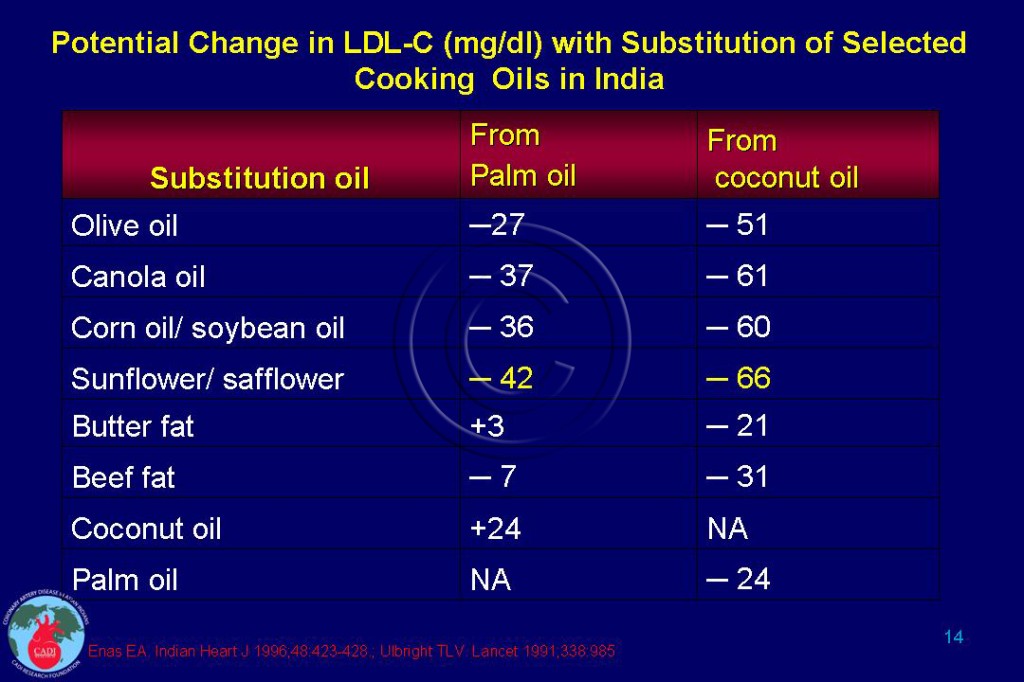Cooking Oils
- Contrary to common belief, cooking oils and cooking media (such as ghee, vanaspathi, and coconut) vary markedly in their effects on blood cholesterol levels. For example, substituting sunflower or safflower oil for palm oil and coconut oil can lower the LDL-C by 42 and 66 mg/dl respectively. Table 014.
- There is little awareness and even controversy about the atherogenic effects of certain foods and oils, especially in regions where production, sale, and consumption of such oils have a profound impact on the regional economy.1
- Unless and until the beneficial effect is clearly demonstrated by well-designed scientific studies, the liberal use of butter, ghee, palm oil, and coconut (oil, meat, and milk) should be discouraged (See Coconut).1
- However, in diets with negligible intake of fish, meat, milk, and dairy fat; modest use (<7% of energy) of such oils may be preferable to no fat at all.
- The medical community and the public need to be educated about the atherogenic and anti-atherogenic effects of various cooking oils, as well as animal and vegetable ghee.1
Sources
1. Enas EA. Indian diet and cardiovascular disease: An update. In: Chatterjee SS, ed. Update in Cardiology Hyderabad: Cardiology Society of India.; 2007.


